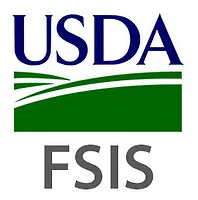FSIS Proposes New Labeling Rules for Mechanically Tenderized Beef Products
The U.S. Department of Agriculture's (USDA) Food Safety and Inspection Service (FSIS) is proposing new requirements for labeling beef products that have been mechanically tenderized, including adding new cooking instructions, so that consumers can safely enjoy these products.
"Ensuring that consumers have effective tools and information is important in helping them protect their families against foodborne illness," said Under Secretary Elisabeth Hagen. "This proposed rule would enhance food safety by providing clear labeling of mechanically-tenderized beef products and outlining new cooking instructions so that consumers and restaurants can safely prepare these products."
To increase tenderness, some cuts of beef go through a process known as mechanical tenderization, during which they are pierced by needles or sharp blades in order to break up muscle fibers. Research has shown that this process may transfer pathogens present on the outside of the cut to the interior. Because of the possible presence of pathogens in the interior of the product, mechanically tenderized beef products may pose a greater threat to public health than intact beef products, if they are not cooked properly.
The proposed rule would require that mechanically tenderized product is labeled so that consumers know they are purchasing product that has been mechanically tenderized. The rule would also require the labels of mechanically tenderized product to display validated cooking instructions, so that consumers have the information they need to cook this product in a way that destroys illness-causing pathogens.
Since 2003, the Centers for Disease Control and Prevention has received reports of five outbreaks attributable to needle or blade tenderized beef products prepared in restaurants and consumers' homes. Failure to thoroughly cook a mechanically tenderized raw or partially cooked beef product was a significant contributing factor in all of these outbreaks. In developing this proposed rule, FSIS used data from its own research, from the Agricultural Research Service, and from the CDC to determine the public health risk associated with undercooking mechanically tenderized products, and the benefits of the proposed rule.
The proposal was posted today on the FSIS website at www.fsis.usda.gov/regulations_&_policies/Proposed_Rules/index.asp and soon will publish in the Federal Register. The comment period will end 60 days after the proposal publishes in the Federal Register and must be submitted through the Federal eRulemaking Portal at www.regulations.gov, or by mail to the U.S. Department of Agriculture (USDA), FSIS, OPPD, RIMD, Docket Clearance Unit, Patriots Plaza III, Room 8-164, 355 E Street, S.W., Washington, D.C. 20024-3221. All items submitted by mail or electronic mail must include the Agency name and docket number, which will be assigned when it is published in the Federal Register.
Looking for quick answers on food safety topics?
Try Ask FSM, our new smart AI search tool.
Ask FSM →








